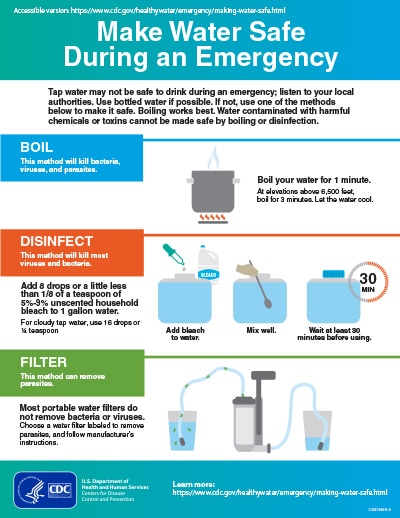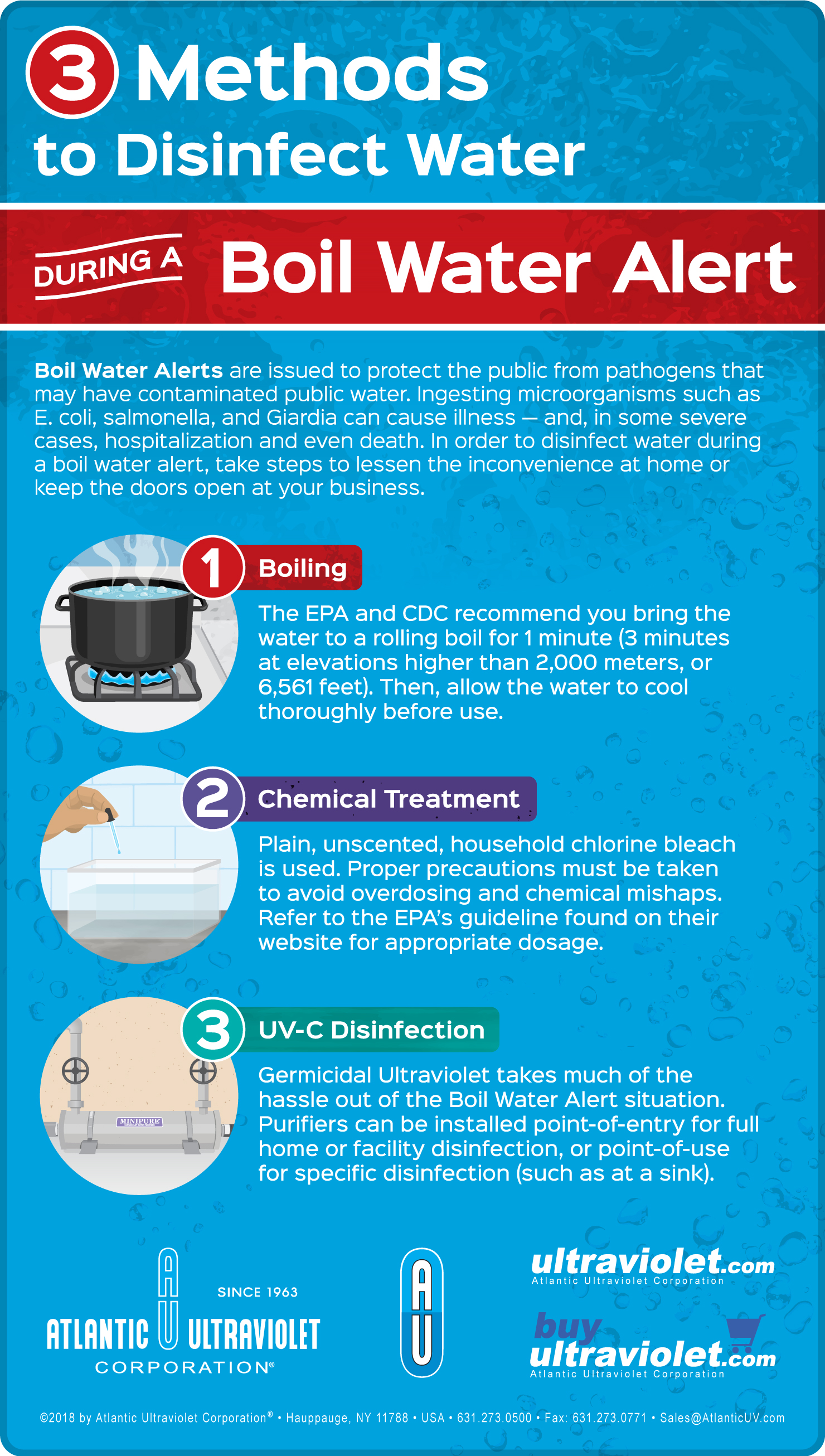This is Anthony Thompson, chief editor and the founder of this site, Tinyhousegarage. I'm a home architect. Basically, I've created this site to help people...Read more
Contaminated water can be a serious threat to our health. It is essential to take the necessary steps to ensure that our drinking water is safe to consume. Disinfecting water is the best way to make sure that harmful bacteria and viruses are removed. It is also important to understand how to disinfect contaminated water in order to keep ourselves and our families safe.
In this article we will discuss the importance of disinfecting contaminated water, the different methods used to do so, and the precautions to take when using these methods. We will also provide helpful tips on how to ensure the safety of our drinking water and how to properly disinfect contaminated water. By the end of this article, you will have a better understanding of how to disinfect contaminated water and the necessary steps to ensure your family’s safety.
- Boil the contaminated water for at least one minute, or three minutes if the water is above 6,000 feet. Boiling is the most effective way to kill bacteria, viruses, and other pathogens.
- If boiling is not available, use chlorine tablets to disinfect water. Follow the instructions on the package, as chlorine concentrations vary.
- If using chlorine tablets, wait 30 minutes before drinking the water.
- For cloudy water, strain out sediment with a cloth before disinfecting.
- If available, use a water filter to remove particles.

How to Disinfect Contaminated Water?
Contaminated water can be dangerous and can cause serious health issues. In order to reduce the risk of illness, it is important to know how to properly disinfect contaminated water before it is consumed. This article will provide a step-by-step guide on how to disinfect contaminated water.
Boiling
Boiling is one of the most effective methods of disinfecting contaminated water. To do this, bring the water to a rolling boil for at least one minute. This will kill any bacteria and other organisms that may be present in the water. Boiling is effective in killing most bacteria, viruses, and other organisms, but it will not remove any chemical contaminants from the water.
Chlorination
Chlorination is another common method for disinfecting contaminated water. To do this, add a small amount of chlorine or chlorine-containing products such as liquid bleach to the water. Allow the water to sit for at least 30 minutes, then filter the water before drinking. This will kill most bacteria, viruses, and other organisms, but it may not be effective in removing chemical contaminants.
Ultraviolet Light
Ultraviolet (UV) light can also be used to disinfect contaminated water. This method involves exposing the water to a UV light source for a specific amount of time, which will kill any bacteria, viruses, and other organisms present in the water. UV light is an effective method of disinfection, but it does not remove any chemical contaminants from the water.
Distillation
Distillation is a process that involves boiling the water and then collecting the vapor that is produced. The vapor is then condensed, and the resulting liquid is pure and safe to drink. This method is effective in removing most bacteria, viruses, and other organisms, as well as chemical contaminants.
Ion Exchange
Ion exchange is a process that involves passing water through a special filter that is designed to remove specific ions. This method is effective in removing heavy metals and other chemical contaminants from the water.
Reverse Osmosis
Reverse osmosis is a process that involves passing water through a special filter that is designed to remove dissolved solids. This method is effective in removing bacteria, viruses, and other organisms, as well as chemical contaminants.
Solar Disinfection
Solar disinfection is a method of using the sun’s ultraviolet rays to disinfect water. This method involves exposing the water to direct sunlight for several hours, which will kill bacteria and other organisms present in the water. This method is effective in killing most bacteria and viruses, but it may not be effective in removing chemical contaminants.
Filtration
Filtration is a process that involves passing water through a filter that is designed to remove particles and other contaminants. This method is effective in removing bacteria, viruses, and other organisms, as well as chemical contaminants.
Chemical Disinfection
Chemical disinfection is a method that involves adding a chemical disinfectant to the water. This method is effective in killing bacteria and other organisms present in the water, but it may not be effective in removing chemical contaminants. Common chemical disinfectants include chlorine, chlorine dioxide, and ozone.
Frequently Asked Questions:
Water is essential for human life, but contamination can occur due to natural disasters, agricultural runoff, or other sources. Disinfecting contaminated water is an important step in ensuring that it is safe to consume. Read on to learn more about how to disinfect contaminated water.
1. How can I disinfect contaminated water?
The most reliable method for disinfecting contaminated water is boiling. This is one of the simplest and most effective ways to make sure the water is safe to drink. Boiling contaminated water for at least one minute will kill most bacteria, viruses, and parasites. It is important to remember that boiling will not remove chemical contaminants, so if chemical contamination is suspected, the water should be filtered before boiling.
Another method for disinfecting contaminated water is the addition of a chemical disinfectant such as chlorine or iodine. These chemicals can be used to kill bacteria, viruses, and parasites in water. Chlorine is the most widely used chemical disinfectant and is available in tablet or liquid form. Iodine is also available in tablet or liquid form and is effective at killing bacteria and viruses, but is less effective against parasites. Both chlorine and iodine will also not remove chemical contaminants, so the water should be filtered before disinfection.
2. What are the risks of consuming untreated contaminated water?
Consuming untreated contaminated water can be dangerous and can cause a number of health problems. Contaminated water may contain bacteria, viruses, parasites, and chemical contaminants such as lead, arsenic, and other heavy metals. These contaminants can cause a variety of health problems, ranging from mild gastrointestinal symptoms to serious illnesses like cholera, dysentery, and typhoid fever.
In addition to the health risks, untreated contaminated water can also contain high levels of pollutants that can be toxic to the environment. These pollutants, such as fertilizers and pesticides, can cause long-term damage to ecosystems and wildlife.
3. What is the difference between boiling and chemical disinfection?
Boiling and chemical disinfection are both methods of making contaminated water safe to drink, but they are not quite the same. Boiling is the most reliable and effective way to make sure the water is safe to drink, and it is also the simplest. Boiling kills bacteria, viruses, and parasites, but it does not remove chemical contaminants. On the other hand, chemical disinfection is effective at killing bacteria and viruses, but is less effective against parasites and does not remove chemical contaminants.
4. How long should I boil contaminated water?
In order to make sure contaminated water is safe to drink, it should be boiled for at least one minute. Boiling for longer than one minute may provide additional protection against parasites, but is not necessary. Boiling for too long can cause some of the water to evaporate, so it is important to take into account the amount of water that will be boiled.
5. How do I know if my water is contaminated?
The best way to know if your water is contaminated is to have it tested. Testing can identify the presence of bacteria, viruses, parasites, and chemical contaminants in the water. Some water testing kits are available for purchase, but it is best to have the water tested by a professional lab. Professional testing is more accurate and can identify contaminants that may not be present in the water in high enough concentrations to be detected by a home testing kit.

When is water safe to drink? – Mia Nacamulli
In conclusion, knowing how to disinfect contaminated water should be a priority for anyone who may find themselves in a situation where they are unable to get access to clean, safe water. There are several methods that can be used to disinfect contaminated water, such as boiling, chlorine tablets, or iodine drops. However, it is important to remember that these methods can only be used on water that is free of large debris and sediment. If the water is too murky, it will need to be filtered first before it can be disinfected. With the correct knowledge and the right supplies, it is possible to make contaminated water safe for drinking.

This is Anthony Thompson, chief editor and the founder of this site, Tinyhousegarage. I'm a home architect. Basically, I've created this site to help people build tiny houses with a limited budget and land space or people who are homeless. As a home architect, I became very disheartened when I saw homeless people around me, which influenced me to create this site to help people build beautiful tiny houses.
More Posts
